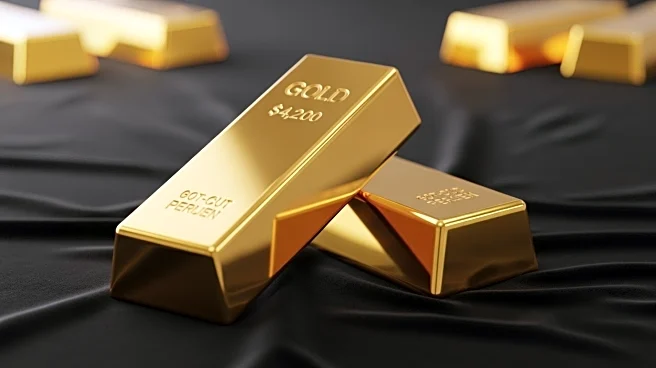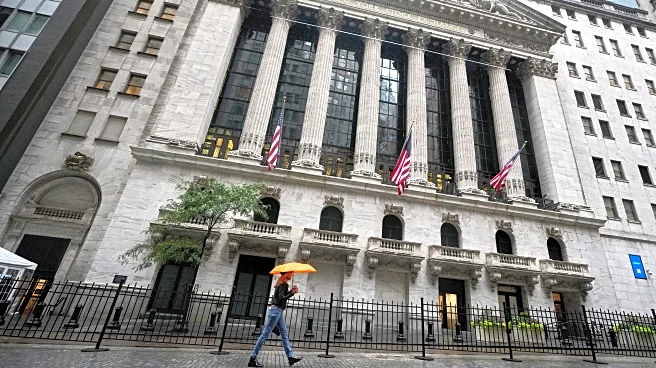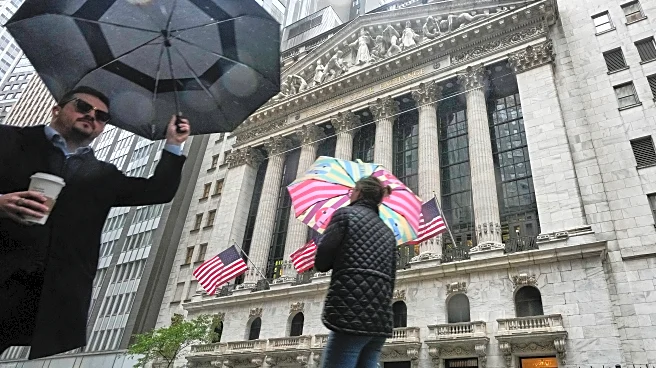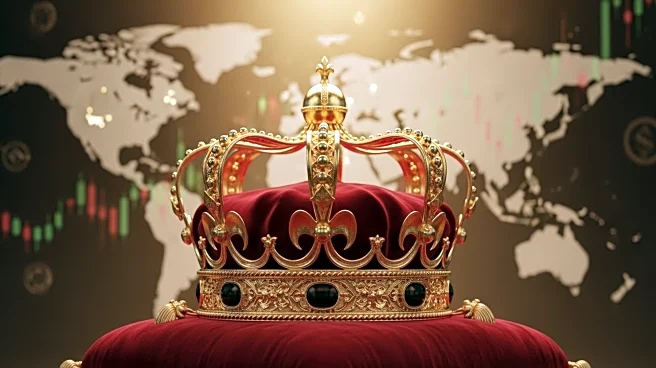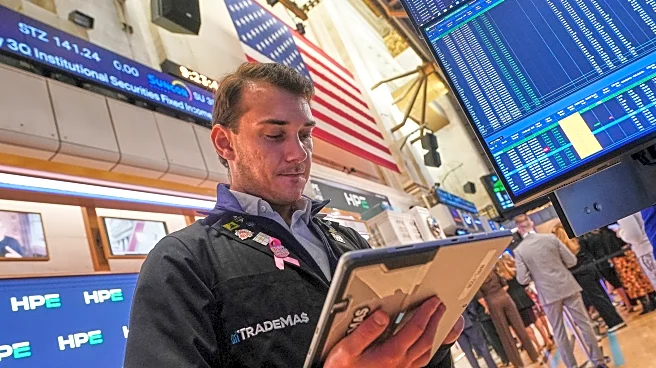What's Happening?
Gold prices have experienced a dramatic rise, reaching over $4,300 per ounce for the first time, driven by expectations of Federal Reserve rate cuts, U.S. political uncertainty, and global tensions. The
rally has been fueled by record ETF inflows and central bank purchases, with gold up over 60% year-to-date. In Asia, festival buying has pushed premiums to decade highs, particularly in India during the Diwali season. The surge in gold prices is accompanied by a rise in silver, which also hit record highs.
Why It's Important?
The surge in gold prices reflects a broader trend of investors seeking safe-haven assets amid economic and geopolitical uncertainties. This trend indicates a lack of confidence in traditional financial markets and suggests potential challenges for policymakers in maintaining economic stability. The high demand for gold could impact global financial markets, influencing currency values and investment strategies. The situation underscores the importance of monitoring economic indicators and geopolitical developments.
What's Next?
The Federal Reserve's upcoming interest rate decisions will be crucial in determining the future trajectory of gold prices. Any changes in U.S.-China trade relations or geopolitical tensions could further influence investor behavior. Analysts remain bullish on gold's prospects, with some predicting prices could reach $5,000 per ounce. However, a potential correction could occur if economic conditions stabilize or if the Federal Reserve takes a more hawkish stance.
Beyond the Headlines
The current gold rally highlights the complex dynamics of global financial markets and the role of gold as a hedge against uncertainty. It raises questions about the sustainability of current economic policies and the potential for long-term shifts in investment strategies. The situation also emphasizes the need for policymakers to address underlying economic issues to restore confidence in traditional financial markets.







